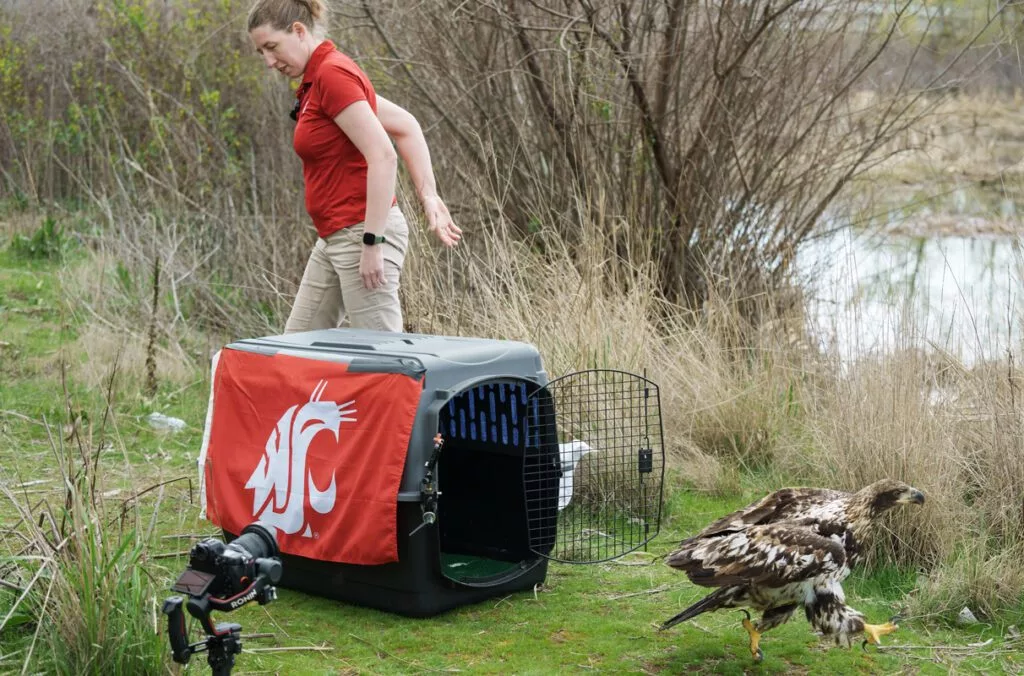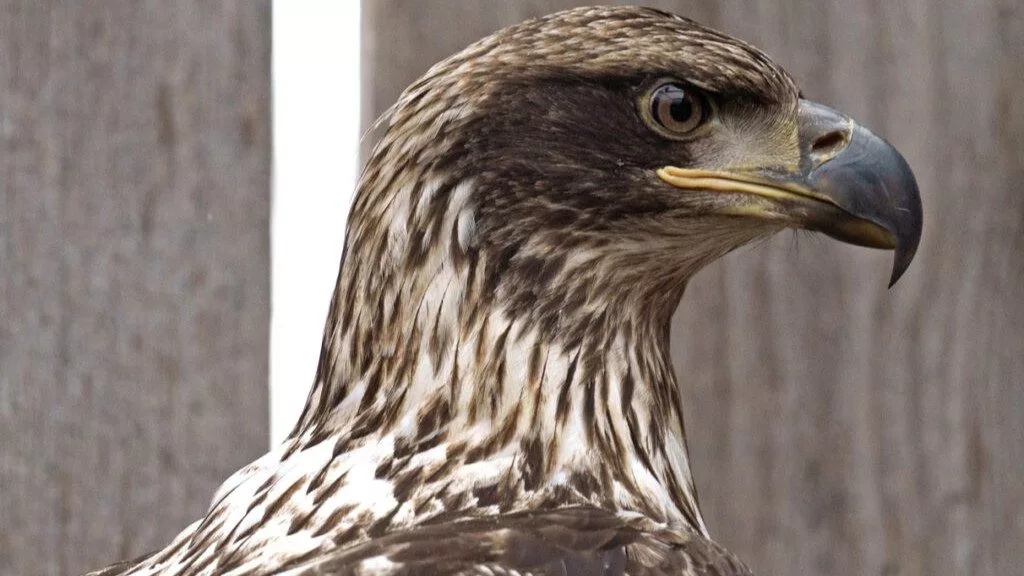PULLMAN, WA – The injured bald eagle was found in a field near Zillah, Washington, unable to fly.
Luckily for the bird, volunteers drove it to the Washington State University Veterinary Teaching Hospital three hours away. There, the young bald eagle was treated for a fractured shoulder.
He became one of about 1,000 wildlife patients the hospital’s Exotics and Wildlife Department expects to treat this year. That can include nearly any wild animal: raptors and songbirds, rabbits, squirrels, and porcupines.

“If it’s wildlife, we’ll treat it,” said Marcie Logsdon, a veterinarian and associate professor. The exceptions are bears and cougars, which are stabilized before being transferred to specialized facilities.
WSU doesn’t charge for this service to our wild world. Generous donors fund the work, and the university contributes some of Logsdon’s time.
“Rehab is a service to wildlife and to the community,” Logsdon said. “From this bald eagle all the way down to the orphaned baby squirrel that a kid picks up, we want to reward that and say, ‘Thank you for caring about wildlife, thank you for caring about the things around you.’”
The wildlife rehabilitation service also gives WSU veterinary medicine students the chance to work with different species than they might see in their careers. And, wildlife rehabilitation can act as an early-warning system for emerging diseases. Bats brought into a rehab facility in Western Washington, for instance, first alerted veterinarians to the spread of a fatal fungal infection called white nose syndrome.

Nationally, about a third of the animals brought into wildlife rehabilitation centers are released back into the wild.
“That’s still really good,” Logsdon said. “If you think about it, most wild animals you wouldn’t be able to approach unless there was something really wrong. Some come in with injuries that aren’t reparable.”
Fortunately, the young bald eagle’s injury was treatable. His fractured shoulder could have been caused by hitting something, or by an altercation with another bird that caused him to fall out of the air, Logsdon said.
His treatment might sound familiar to humans: rest and pain medicine, followed by physical rehab.
As soon as X-rays indicated he was ready, he was moved to a larger enclosure to let him get a little exercise, Logsdon said. After about a month of that, active conditioning started with him tethered to a long line called a creance.
“These guys are athletes out in the wild. We need to make sure we get them muscled back up before they get released,” she said.
The WSU team waited until the harshest winter weather was over before driving the eagle back to the area where he was found. Both decisions were made to try to give the bird the best chance in the wild.
“He took his time, he took a few steps out, then he took off right across the river and seemed to know where he was headed,” Logsdon said of the day he was released. She added that the bald eagle was banded while at WSU, so it may be possible to see what happens to him in the future.
“At one point we had a bald eagle we released that was photographed in Alaska, and the resolution was high enough to read its band number,” she added.
All of that work is worth it. Bald eagles can live upwards of 50 years in captivity, less than that in the wild, but the young bird brought to WSU was only about 3 so could have a long life ahead.
“The release is the cherry on top, the pinnacle after all the hard work everyone has put in,” Logsdon said. “I love working with these animals, and it’s a very important service we’re offering here.”






